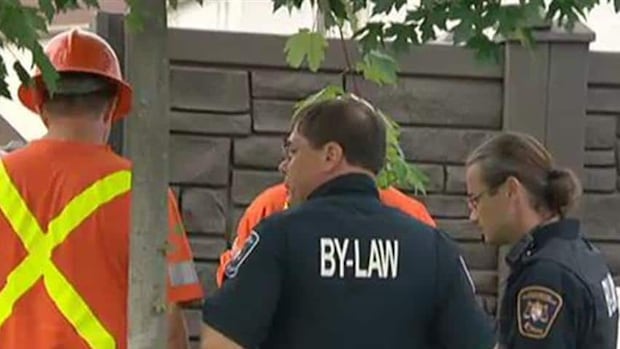Eleven years ago, the City of Ottawa tore down their brown plastic fence.
Today, grass has nearly covered the phantom post holes along the corner lots in the quiet suburb of Orléans. But the ordeal is far from over for the two families.
After multiple lawsuits and more than $43,000 in penalties accrued in their ongoing saga with the city, Mo Haider and Nitin Datta allege their families were victims of bylaw harassment and unfair treatment that has haunted them for the better part of the past decade.
“It’s been unbearable,” said Haider. “Unfathomable.”
CBC News cameras captured the moment when contractors, hired by the city and flanked by hydro workers, bylaw and police officers, partially tore down the fence in July 2013. The fence for both lots had cost about $18,000 to install, Haider said.
Haider and Datta’s backyards faced each other, and the fence closed off their properties along a residential street. It was placed roughly 2.7 metres (about nine feet) from the curb and wrapped around a green hydro transformer box.
The city said it removed the fence for safety reasons and because it was built on the city’s right-of-way along the grass boulevard.
Haider and Datta believe the city mishandled their case and say they should never have been billed for the fence removal — a fine that snowballed from about $4,600 per household to more than $21,700 each as of the latest property tax bill.
They refuse to pay it.
WATCH | CBC Ottawa captures fence removal in 2013:
The two families sued the city and several other parties in 2015. Then, they got sued by the law firm that initially represented them — a small claims matter that was dismissed recently.
Now, the new homeowners who bought Datta’s property in 2020 are suing him for the property tax lien on their account, which continues to grow beyond the holdback amount they agreed upon during the purchase. The parties in this lawsuit declined to speak with CBC News for this story.
Settlement offers between the families and the city came and went, but their claims continue to drag on.
“It was just stress and chaotic for 10 years. Nobody wants to help,” said Datta, whose side of the fence has since been rebuilt. “Nobody cares.”
Serial complainers, allegations of bylaw ‘harassment’
Haider says the issues began long before any fence was built, back in 2010 — a year after his family moved into their new home.
Someone called to complain about a car with no plates parked on Haider’s driveway, according to bylaw reports CBC obtained through the city’s access to information office.
Then, a complainant reported multiple times that Haider “parked on the grass” of his front lawn in 2011. That was deemed unfounded.

After another complaint later that year, Haider got two parking tickets in his own driveway.
Then came the allegation that “a car dealership is being run” out of Haider’s house “in concert” with another neighbour.
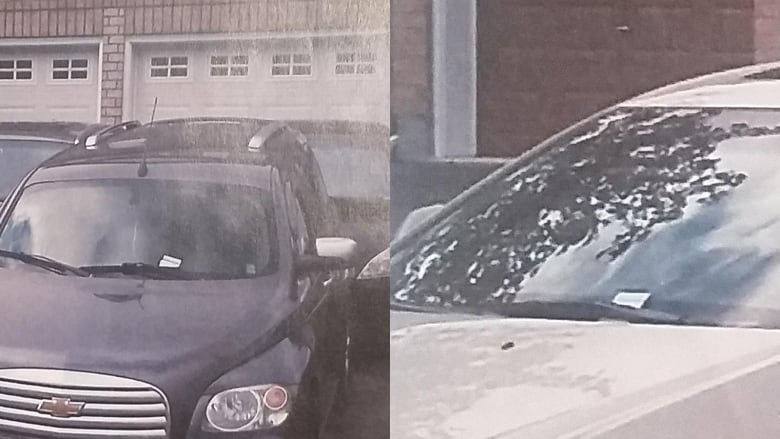
A few days later the caller complained again, this time about a children’s play structure in Haider’s backyard that was “built too tall” — also unfounded.
There were multiple other complaints, from a “huge snow bank” to a ladder leaning against the home.
“As a family, we definitely felt attacked,” Haider said.
It turned out the complaints were coming from a house 13 doors down the street. Documents submitted in court contain city logs showing 27 complaints made from that address between 2011 and 2013.
The complainants have since moved and declined CBC’s request for an interview or to comment.
Meanwhile, several neighbours told CBC they feel Haider and Datta’s families were “targeted” and “harassed” by the city.
“It was really awful,” said Rick Belair, who lives directly across the street from Haider. “I felt it wasn’t fair to him.”
“I never got a ticket, but he’s getting tickets,” said Belair. For example, he said he had a trailer parked on the street in front of his home “for a whole summer,” but never got a visit from bylaw.
“I’m white. Mo’s brown. Why was he the only one who had … infractions?” Belair said. “To me, he was targeted, 100 per cent.”
In court, the city said allegations the families were discriminated against on the “grounds of race” was “totally devoid of merit.”
No conviction but still billed
The crux of Haider and Datta’s argument is that since the families were never convicted of an offence, and built the fence relying on property line measurements given to them by city staff, they should never have been billed for its removal.
According to photos submitted in court, the fence was installed between rows of red and yellow flags marking underground gas and electric lines, or locates. As required by law, the families requested the locates from hydro and gas before building the fence.
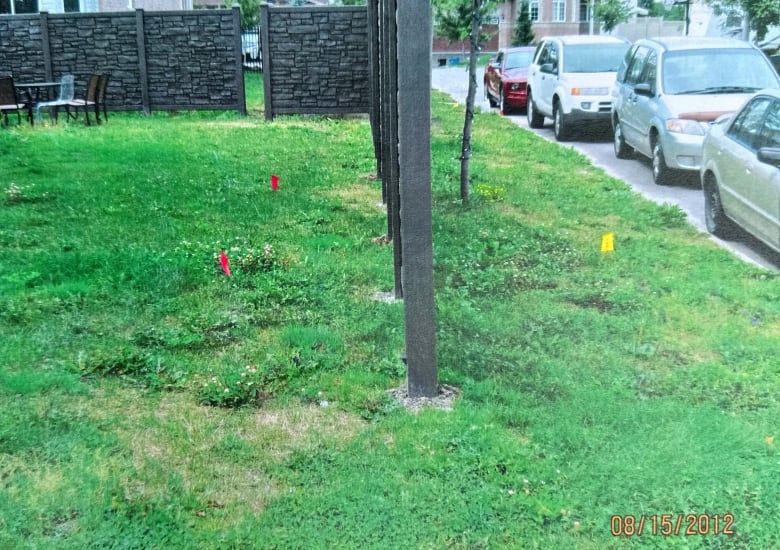
A month later, another complaint came in about Haider’s fence being “very close” to a utility box and mailbox.
Haider stated in his court affidavit that he called the city “to inquire where the property line was in relation to the curb” before building the fence, and said a bylaw employee “advised that the fence had to be 9 ft from the curb.”
In court documents, the city denies it “at any time, advised the Plaintiffs to place their fence on the city’s road allowance.”

While homeowners don’t need a permit to build a fence and there’s no minimum distances from curb to street, the city says residents can’t build fences on its right-of-way. Lot lines can be confirmed by a property survey, it said.
In August 2012, Datta and Haider each received a bylaw ticket over the fence but left it untouched. According to city records, an officer closed the case that same month.
That fence must be removed as soon as possible.– Hydro One email to City of Ottawa
But a year later, the same complainant again notified the city about the fence.
In April 2013, a bylaw officer gave the families more serious provincial offence notices with a fine of $260 each for contravening the fence bylaw.
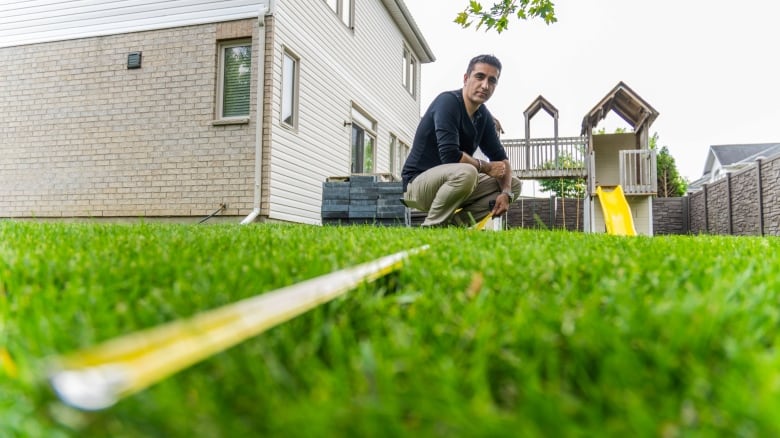
Haider and Datta wanted to fight the infraction in provincial court, so they filed a notice of intention to appear. Months passed, then years. They never got their day in court.
Because the city filed the tickets late, they were tossed out. The families argue that without a conviction, the city should not have pre-emptively torn down their fence and billed them for it.
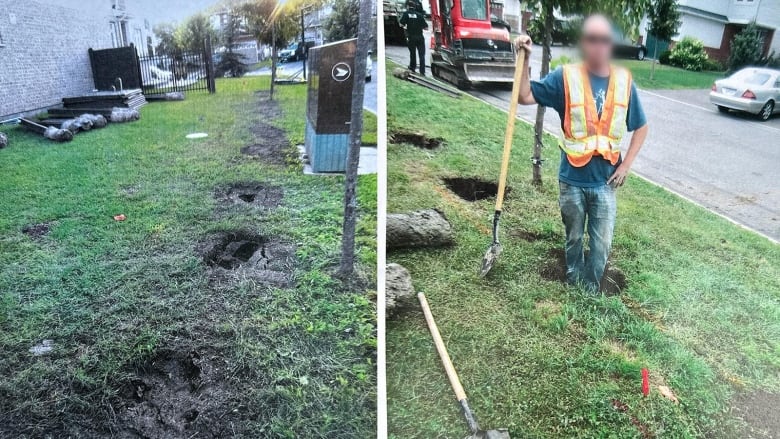
But according to criminal lawyer David Anber, it’s possible for a defendant to avoid conviction in provincial court but still be billed by the city for whatever corrective measures are taken.
“They’re different silos,” Anber said.
Haider, Datta cast doubt on safety concern
In 2013, a Hydro One technician wrote to city officials that a 16,000-volt cable near the fence was “extremely close” to the fence posts, and was “potentially endangering” the public.
“That fence must be removed as soon as possible,” the technician wrote that June.
Reached by phone, the contractor who built the fence didn’t agree to an interview but told CBC News they believe the fence was safer than most because it was made of plastic. Nor were there any safety concerns during construction, the contractor said.
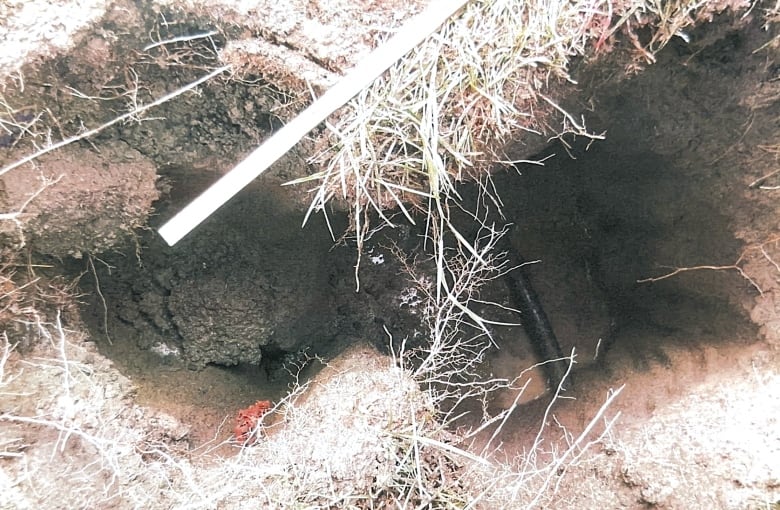
The day the fence was removed, a bylaw officer noted one post was precariously close to an underground hydro wire.
“The wire was missed by about a foot,” the bylaw officer reported to their chief — an estimate Haider disputes.
In their claims, Haider and Datta said workers “proceeded to drill additional holes in search of high voltage cables to justify their excuse to remove the fence” — a claim the city denied in its statement of defence.
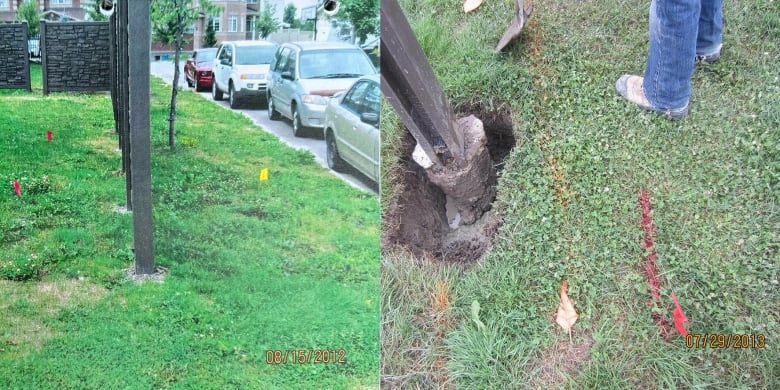
“If it was touching, I agree [that’s dangerous],” said Haider. “And if it was a danger, I personally would have taken it out myself. I have children, I have neighbours.”
Haider also questions why the red hydro locates were placed farther from the fence in 2012 than in 2013, when they were noticeably closer. Hydro One argued in court documents that workers marked the utilities “appropriately.”
Did the city follow proper procedures?
Retired Ottawa bylaw officer Derek Petch, who was not directly involved in the fence matter, said he may have handled the case differently.
Petch, who was a bylaw officer for 28 years, reviewed some internal reports relating to this incident in court documents provided by CBC.
Once you’ve secured a conviction, then you could proceed with contracting out.– Derek Petch, former Ottawa bylaw officer
He said no two cases are the same, but procedurally, if the residents didn’t comply with the initial bylaw tickets, he would have issued a more serious notice of violation letter with a compliance deadline.
It appears officers didn’t do that for Haider and Datta, according to bylaw records, and the families only got registered city letters days after the fence was removed.
“Once you do lay a charge and you are proceeding to court, typically you would hold off on any other action until that process was resolved,” said Petch.
“Once you’ve secured a conviction, then you could proceed with contracting out.”
Petch also noted the fence bylaw under which Haider and Datta were charged contains no provision giving the city power to forcibly remove the fence should it be deemed on city property — but the use and care of roads bylaw does.
He said charging the residents under the latter bylaw “probably would have been the more appropriate charge.”

Asked to explain the proper procedures prior to removing a fence on city property, Ottawa’s current bylaw director Roger Chapman wrote that if the matter isn’t resolved through verbal warnings, the department would issue a notice of violation.
Chapman said residents generally comply after that notice, or by going through the provincial court process.
But in cases where a fence poses an “immediate safety hazard” and the homeowner doesn’t comply, Chapman said bylaw could contract out the removal “in the interest of public safety.”
Chapman said he didn’t readily have data on how many residential fences the city has removed, but said it is “very rare.”
City, complainants deny harassment, negligence
The families each filed claims against the City of Ottawa, the current and former bylaw chiefs, Hydro One, Malwood (the contractor hired by the city), and the neighbours who made the bylaw complaints.
They each sought $80,000 in damages and costs.
The Plaintiffs are the authors of their own misfortune.– City of Ottawa statement of defence
In their 2015 claims, the families allege the city and its bylaw officials were negligent, acted with “tunnel vision,” and failed to give them accurate information. They argued the city removed the fence “without legal authority.”
The City of Ottawa denies all the allegations and argued any damages the families suffered were due to their “own negligence or fault.”
“The Plaintiffs are the authors of their own misfortune,” the city wrote in its defence statement, asking the judge to dismiss the claims.
None of the allegations against the city or its officials have been proven in court.

The families alleged the serial complainants used the city “as a vehicle to harass” them intentionally and with malice.
The complainants denied all claims against them including that they “targeted” the families or committed “any sort of intentional infliction.”
In their statement of defence, they said they reported the fence “out of concern for their safety” and “never out of malice.”
A judge dismissed the claim against the complainants in 2016, describing their numerous calls to bylaw as “not frivolous” and “their right.”
The same judge dismissed the claims against Hydro One, calling it “tenuous at best.”
The families filed an appeal but later settled with Hydro One and the complainants, and paid the defendants’ court filing costs.

The case against the contractor Malwood was also dismissed in 2019. Malwood and Hydro One declined an interview request. The former chief of bylaw did not respond to CBC’s multiple requests. The city also declined an interview.
In response to CBC’s long list of questions laying out Haider and Datta’s allegations, the city’s interim solicitor Stuart Huxley wrote the city doesn’t comment on ongoing court matters.
Sleepless nights, suitcases full of docs
Haider says to this day, he’s had countless sleepless nights mulling over every detail, and has become so distrustful of city authorities that he started recording every conversation related to the issue.
Now he has suitcases full of binders, photos, court and city documents, transcripts, analysis and CDs with recordings.
Haider is convinced crucial information has been withheld from him, pointing to redactions in the freedom of information requests on key dates. The city did not answer CBC’s question about this.
“This has taken up so much time from my life,” said Haider.
Datta agrees.
“It’s pure nightmare.”




